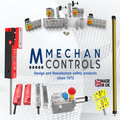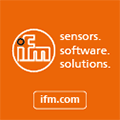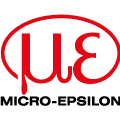
Posted to News on 21st Mar 2013, 16:37
Unmanned aerial system built with additive manufacturing
A project to develop an unmanned aerial system has involved two companies: FLYING-CAM and CRP Group. Their aim was the construction of a Special Aerial Response Automatic Helicopter: SARAH
FLYING-CAM is pioneer in the development and application of rotary wing Light Unmanned Aerial Systems (UAS) for the demanding motion picture industry. Winner of an Academy Award for Technical Achievement from the Academy of Motion Pictures Arts and Science, FLYING-CAM is established in state-of-the-art close range aerial filming technology, with credits including Harry Potter, James Bond, Mission Impossible, Red Cliff and many others.
For the last 7 years FLYING-CAM has focused on the development of the next-generation rotary wing light UAV. Their Aerial Robotic Engineering team is now strategically focused on precision 3D aerial Imagery Intelligence (IMINT) for multiple markets: Law Enforcement, Defence, Civil Security, News & Entertainment and the related Services markets.
CRP is dedicated to additive manufacturing/3D printing, ranging from the motorsport industry to aviation, the aerospace industry and UAS. CRP also produces a range of composite materials for additive manufacturing/3D printing, called Windform. The Windform family is composed of Windform SP, Windform GT, Windform XT 2.0, Windform LX 2.0, Windform GF 2.0, Windform FX and Windform PS. Each material has characteristic mechanical features, making them suitable for a number of applications. CRP also has expertise laser sintering in high-performing sectors. The company has worked with leading racing teams, in particular in the building of parts and components used in wind tunnel testing, as well as on the track for the race.
FLYING-CAM started the close-range aerial filming concept in the 1970s, and has since been leading the way in the motion picture industry with its award-winning Flying-Cam II. Today FLYING-CAM continues to guide innovation with the state-of-the-art Flying-Cam 3.0 SARAH.
Flying-Cam 3.0 SARAH is an electric VTOL (Vertical Take Off and Landing) UAS featuring 25kg TOW and 30 minutes' flight time with a 5kg payload. SARAH stands for Special Aerial Response Automatic Helicopter. Incorporating efficient aerodynamics, innovative flight modes and modular interchangeable payloads, all in a portable unit that is quickly deployable, the SARAH system provides centimetre-level precision aerial 3D imagery intelligence.
SARAH has reached the production stage, and the Spanish Aerospace Research Centre FADA-CATEC has taken delivery of its first SARAH systems. They are used for air traffic management and general aviation research, technology & development projects in partnership with BOEING, EADS and AIRBUS MILITARY. Two weeks' training was sufficient for the client to take control of the whole system.
FLYING-CAM's aim is to design field-proven state-of-the-art products. Each SARAH System is the result of smart and deep thinking, with the KISS & JEEP concepts as a goal: Keep It Simple Stupid and Just Enough Essential Parts.
Automatic Pilot System
As a Light UAS, 25kg TOW including payload, SARAH is recognised as the most advanced technology available today: easy-to-use, maintenance-free propulsion, a proprietary FLYING-CAM Automatic Pilot System and, most importantly, the best real-time image quality, day or night - the core competence of the FLYING-CAM business.
SARAH supersedes heavier and more costly systems. Moreover, the 25kg category is less demanding than for the heavier platform, which further reduces operating costs. Potential applications include Emergency Management, Surveillance, Defence, ENG & EFP Broadcast TV and Motion Picture Production.
The first Flying-Cam airframe structure was made with a composite moulded material. FLYING-CAM then moved to SLS technology in collaboration with CRP Technology in order to accelerate iteration generation, improve manufacturing time and facilitate production in series. It also allows easier customisation of the platform.
The main Flying-Cam parts using additive manufacturing and the Windform materials are:
- Airframe structure
- Air guide cooling system
- Tail unit
- Main battery connection
The requirements were a fast iteration process, best ratio between structural strength and weight, consistent performance and the opportunity to combine multiple functionalities from one part. CRP Technology provided a fast response time to new requirements, very good cooperation between engineers and CAD designers and excellent output quality with a proprietary process.
For further information about additive manufacturing/3D printing and Windform, please go to www.crp.eu/.
Want the latest machine building news straight to your inbox? Become a MachineBuilding member for free today >>
















